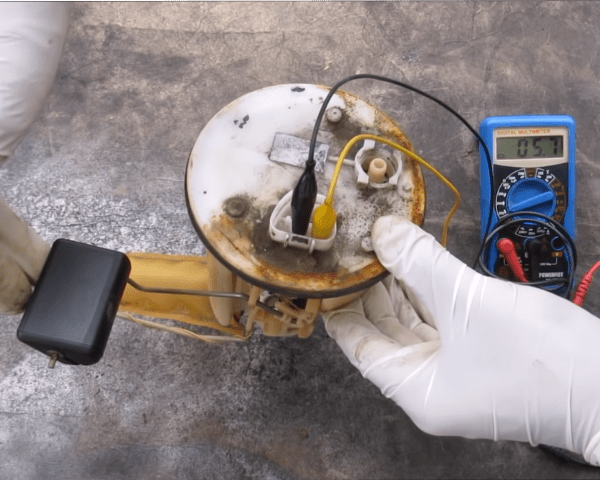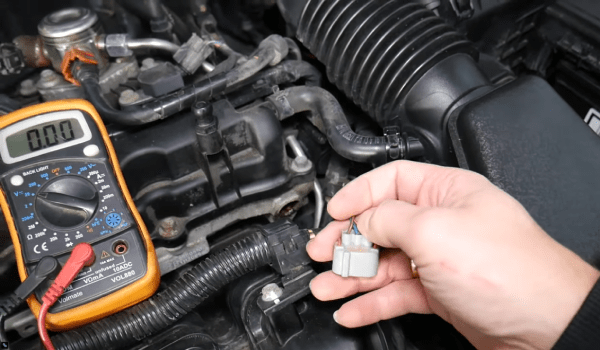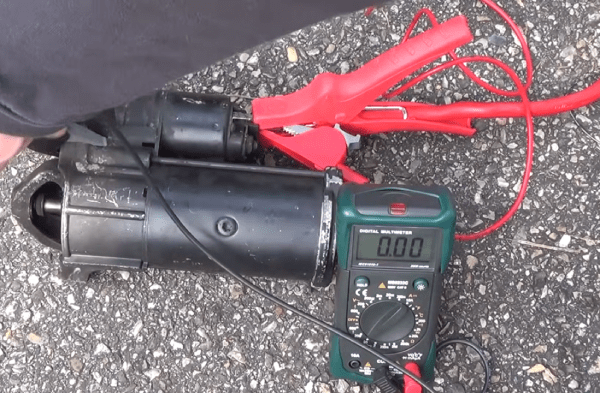Many car owners face the “car won’t start when hot outside” often during the summer. The vehicle can crank and start smoothly in the morning when going to work. But after staying in the sun in the parking lot for those hours, it becomes a challenge.
There are many reasons why your car won’t start when it is hot. Some vehicles may fail to crank, meaning the starter has a problem. You don’t have to be a professional mechanic or an advanced DIYer to get your car back on the road. Read on for the possible causes of this problem and how to diagnose it.
Possible causes for which your car might not start when hot outside
A hard start when the outside temperature is high is not as easy to diagnose as other car problems. In this case, a loss of fuel pressure, electrical faults, bad sensors, or a faulty starter motor can all be the culprit.

During my mechanic career, I’ve encountered multiple faults causing the vehicle not to start when hot outside. I will go through all of them in no particular order. Some of them are easier to diagnose than others; hence, if you are less experienced with car mechanics, you might need to visit a repair shop.
Faulty Electrical Module and Electrical Connections
Modern-day cars are complex machines with many electronic control modules or units that monitor and control different systems. The cranking and starting of your car are such complex processes precisely controlled by your car’s computer. These computers rely on sensor data to operate actuators, and electrical wires connect those components.
Heat affects the operation of electronic modules and significantly increases resistance in wires. Various components expand, which can cause an open circuit in the system. This intermittent operation will make your control module not send the right signal for air-fuel ratio and proper timing for your engine to start.
A faulty electrical control module can operate intermittently for some time but eventually fails, and the car won’t start. This unit requires professional diagnosis, repair, or replacement. So, consider taking your vehicle to an auto repair shop if it is the case.
Loss Of Fuel Pressure – Bad Fuel Pump

Loss of fuel pressure is one of the most common causes of hard starts when the weather is hot. The fuel system works to supply the right amount of fuel as demanded to start the engine and keep it running. But how do you know if it is the culprit or not?
The most common cause of loss of fuel pressure is a faulty fuel pump. Your fuel pump can still run but lacks enough power to maintain enough fuel pressure. The common symptoms include the following:
- Difficult Starts
- Fuel Tank Noises
- Sputtering Engine
- Power Loss
Decrease In Fuel Efficiency
The first step is to check if your fuel pump is working correctly. To do that, put the ignition in a run position but not enough to ignite the car. Listen for a humming sound coming from the backseat of the car, where the fuel pump is usually located. Also, the engine may crank. But since it doesn’t get enough fuel, you may need more than one attempt to finally start it.
How do you isolate the fuel system issue from other possible causes of hard starts when it is hot outside? Proceed as follows:
- Remove the air cleaner assembly to access the throttle body. Reference your car repair manual for instructions on how to do it, or contact your mechanic for help.
- Open the throttle valve or ask someone to step on the accelerator pedal to open it for you. Ensure the engine is off when doing that.
- Spray starting fluid into the throttle body and try to start the engine. If the engine starts or shows signs of starting, the problem is in the fuel system components. It can be the fuel pump, fuel pressure regulator, fuel filter, fuel injectors, etc.
But if the car is still hard to start after sparing the starter fluid in the throttle body, the problem is not the engine system. Check other possible causes.
Faulty Camshaft Position Sensor

Camshaft Position Sensor or crankshaft position sensor plays a vital role in starting the car. It monitors the piston movement and crankshaft position and relays it to the ignition control module or electronic control unit. The car’s computer uses the data from the two sensors to know when to fire each spark plug to start the engine.
High temperatures may worsen the problem in the sensor circuitry. It can also be the route of faults in the sensors as it causes the internal circuitry to develop small breaks or opens. These problems manifest more when the weather is hot, rendering the sensors faulty. The wrong information sent by these sensors to the ignition module causes hard starts.
Symptoms of a faulty camshaft position sensor include the following:
- The engine won’t start
- Poor engine performance
- Engine misfire & vibration
- Problems with shifting gear
- Decreased mileage per gallon
Bad Ignition Module/PCM
As mentioned, the ignition module uses data from camshaft or crankshaft position sensors to know when to fire the spark plugs to start the engine. As with other electronics, high temperatures can also affect the operation of this module, especially if it is already faulty.
The signs of a faulty ignition module of PCM are the same as those of an ineffective camshaft position sensor. So, it is advisable to test your sensors first. Besides, the ignition module rarely fails. But if it does, you should replace it.
Vapor Lock
Gasoline is volatile, meaning it can vaporize over a slight temperature change. This property allows it to mix with air but is also disadvantageous. Gasoline can vaporize before it reaches the combustion chamber, causing a vapor lock.
Vapor lock is due to fuel heating up in the ignition system or carburetor when the weather is hot. The vapor or bubbles formed might block the fuel lines and prevent the free flow of fuel to the engine. A clogged vent line can also result in a vapor lock.
The most common signs of vapor lock include the following:
- No starting
- Lack of engine power
- Engine stalling
- Hard starting
Modern vehicles with fuel injection systems rarely surfer the vapor lock problem. But if your car uses a carburetor, it becomes a likely cause of hard starts when the weather is hot.
Look for a clogged fuel return line, clogged vent line, or any other condition that can overheat fuel in the fuel lines. Fixing those problems [will resolve the engine hard starts.
Defective Starter Motor

If your car does not crank when it is hot outside, the most likely cause is a defective starter motor. The internal component of this electrical machine wears down over time. The brushes and springs that hold them also weaken. Heat compounds the problem and increases electrical resistance in these parts. Eventually, the starter motor becomes too weak to start the engine.
Signs of a defective starter motor include the following:
- Grinding or clattering sound
- A strange smell when cranking
- No activity at all
- Whirring noise
- Smoke rising from the starter
Diagnosing a faulty starter motor is challenging and requires expertise. However, you can start by measuring the voltage drop in the system using a digital multimeter. Alternatively, you can take your car to an auto repair shop for help.
Other Causes of Hard Starts
Hard starts can result from many other reasons, which include the following:
- Clogged air filter
- Corroded or loose battery terminal
- Corroded or loose engine ground connection
- Faulty coolant temperature sensor
- Faulty spark plugs
- Faulty exhaust gas recirculation valve
Cost of Repairing Hard Starts
The repairing hard starts when hot outside fee varies from place to place. It also depends on the specific component that requires fixing or replacement.
It will cost you about $100-$150 for diagnosis, just to know why your car won’t start when the temperature rises. Any other service fees you will pay after that depend on the work and parts to be replaced.
Final Words
Your car may fail to start when hot outside due to many reasons. A fuel system may be the culprit if the car cranks but the engine does not start. Check all its components to identify the faulty ones. But if the car does not crank, the starter motor may be defective.
Also, check for all other possible causes of hard starts that can escalate due to high temperatures. Fortunately, you can fix some of those problems yourself. Otherwise, take your car to an auto repair shop or contact your mechanic.
My name is Jeffrey Williams and I have been a car mechanic for over 35 years. I am currently working NYC Auto Repair Shop, in New York City and recently developed a strong passion about blogging. I decided to put together this blog where I will try and answer the most commonly asked questions I get on a daily basis from my customers.








